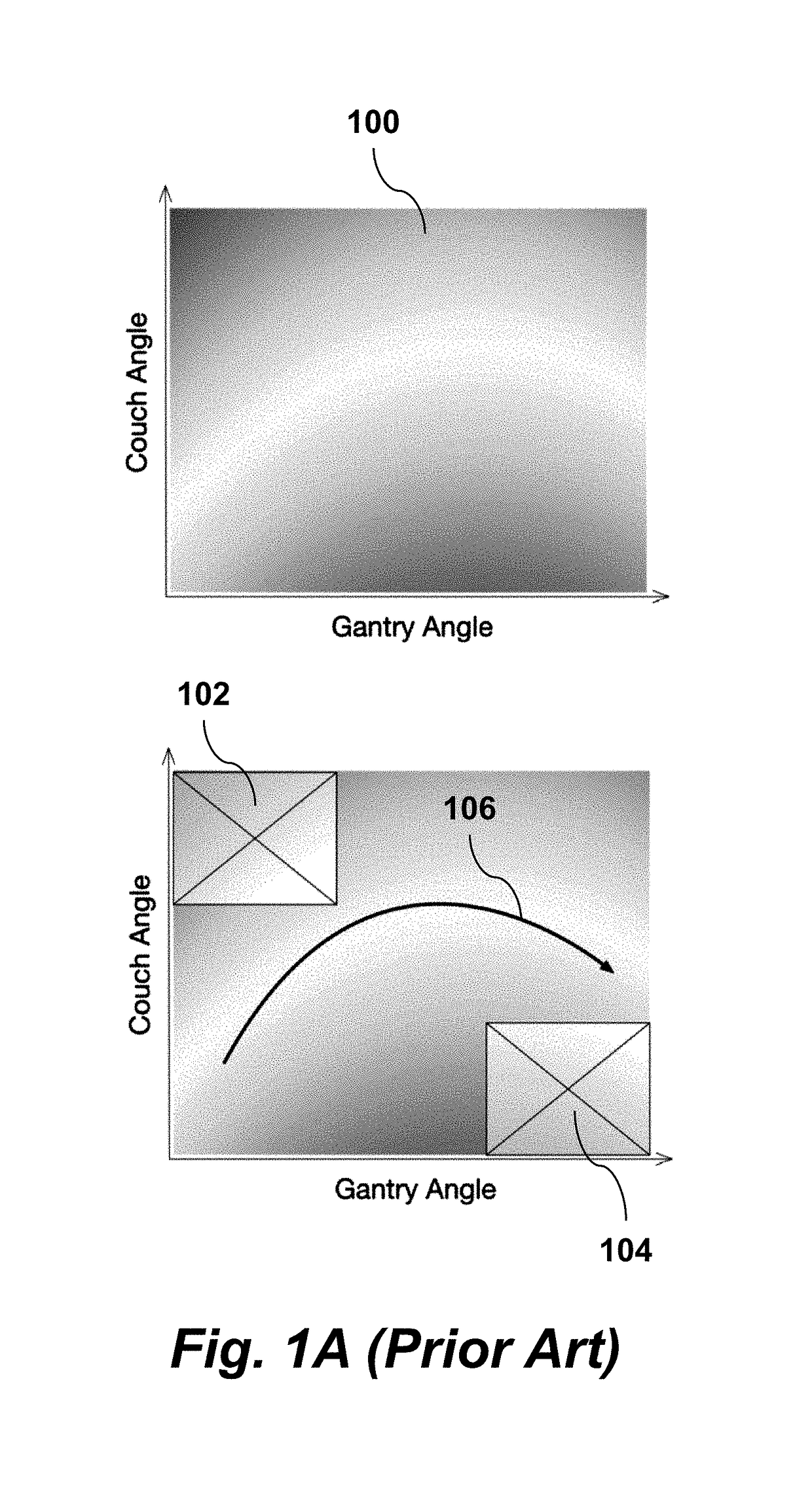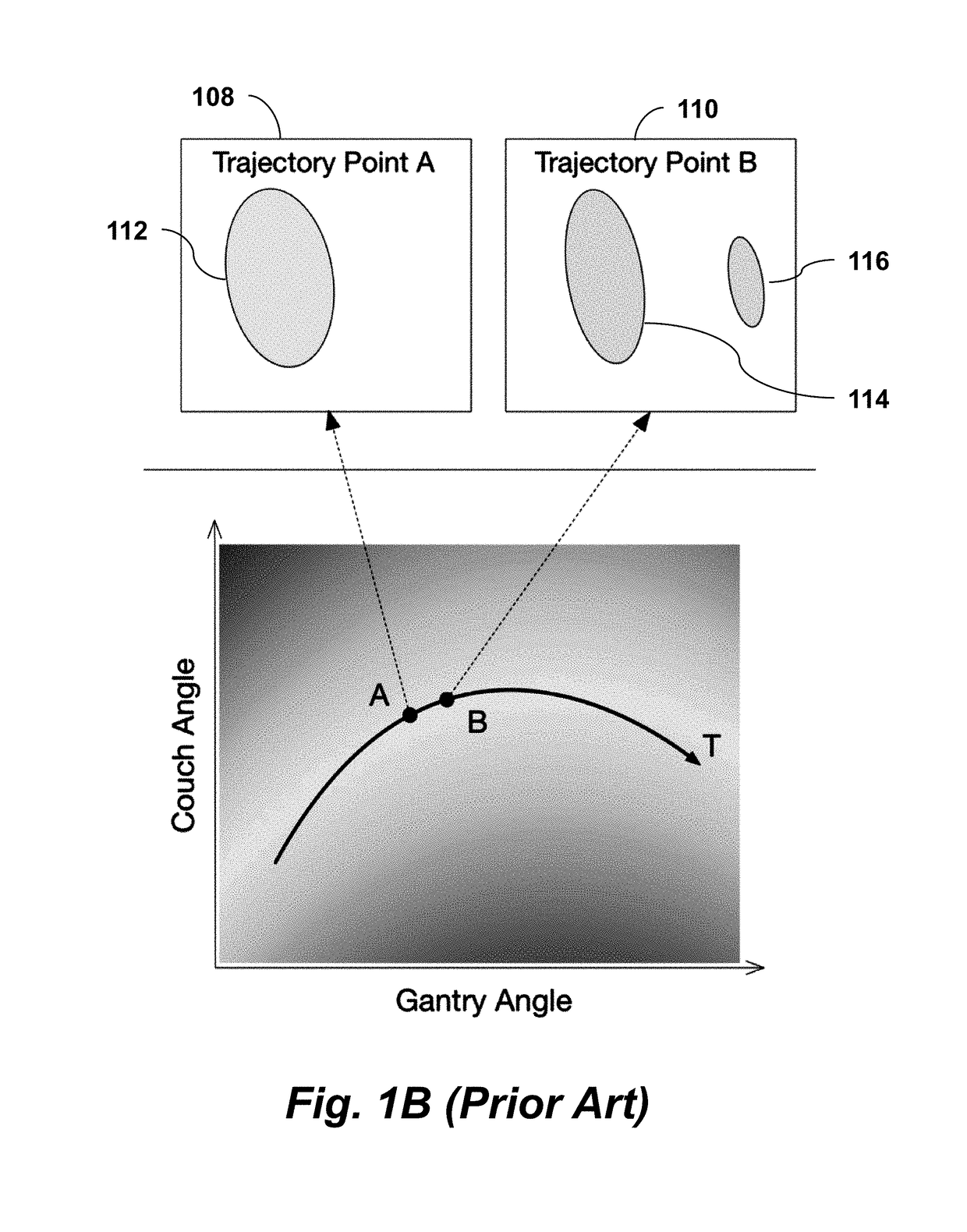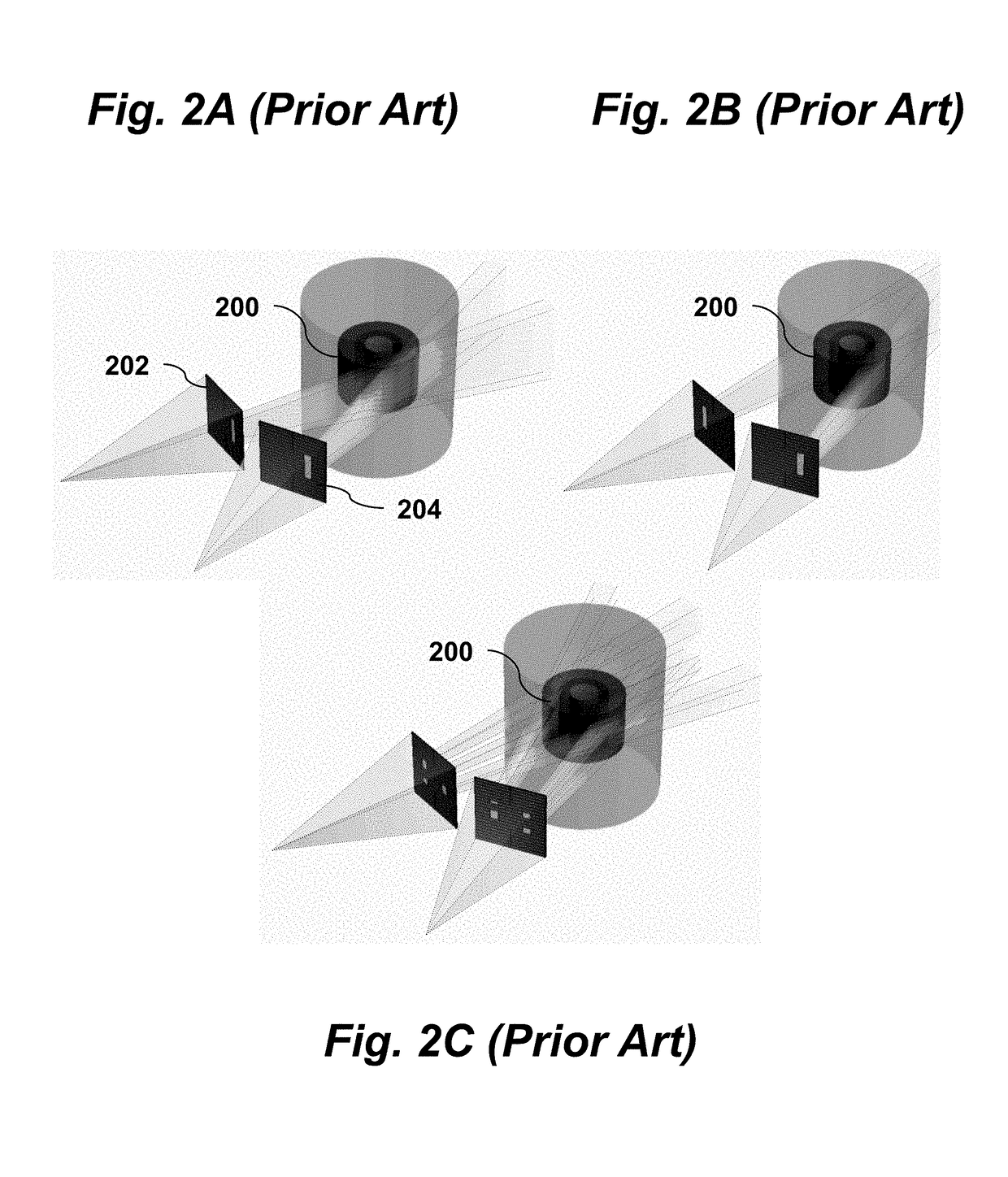Trajectory optimization in radiotherapy using sectioning
a sectioning and trajectory optimization technology, applied in the field of trajectory optimization and radiation treatment planning, can solve the problems of affecting the treatment effect, the connection between the ideal region and the incident angle, and the technique was not widely adopted into mainstream clinical use, etc., to achieve the effect of avoiding degradation of trajectory optimization quality, optimal trajectories, and fewer mlc contention issues
- Summary
- Abstract
- Description
- Claims
- Application Information
AI Technical Summary
Benefits of technology
Problems solved by technology
Method used
Image
Examples
Embodiment Construction
Definitions
[0049]The term “BEV” or “beam's eye view” refers to a perspective on the patient assumed from the direction of the incident radiation.
[0050]The term “MLC” or “multi-leaf collimator” refers to a component of the beam shaping elements of the radiation delivery device.
[0051]The term “monitor unit” or “MU” refers to a measurable unit of charge collected by the radiation delivery device and relates to the amount of radiation exiting the radiation delivery device.
[0052]The term “volumetric modulated arc therapy” or “VMAT” refers to a technique of irradiating a patient with a delivery device that forms an arc-like trajectory about the patient using a rotating mechanical gantry system.
Overview
[0053]FIG. 3 describes the process of generating trajectories with TORUS. The inputs to the algorithm are shown in row 300: The patient's model (ROI—regions of interest), dosimetric constraints, and the delivery coordinate space corresponding to the delivery device and patient configuration....
PUM
 Login to View More
Login to View More Abstract
Description
Claims
Application Information
 Login to View More
Login to View More - R&D
- Intellectual Property
- Life Sciences
- Materials
- Tech Scout
- Unparalleled Data Quality
- Higher Quality Content
- 60% Fewer Hallucinations
Browse by: Latest US Patents, China's latest patents, Technical Efficacy Thesaurus, Application Domain, Technology Topic, Popular Technical Reports.
© 2025 PatSnap. All rights reserved.Legal|Privacy policy|Modern Slavery Act Transparency Statement|Sitemap|About US| Contact US: help@patsnap.com



